Jasper Lake Fanless Showdown: ECS LIVA Z3 and ZOTAC ZBOX CI331 nano UCFF PCs Review
by Ganesh T S on July 8, 2022 8:30 AM EST- Posted in
- Systems
- ZOTAC
- Fanless
- ECS
- Passive Cooling
- UCFF
- Mini-PC
- Jasper Lake
HTPC Credentials
The HTPC-related sections in previous SFF PC reviews covered a range of aspects. Display refresh rate stability (particularly, the ability to drive 23.976 Hz for stutter-free playback of cinema content), OTT streaming efficiency (YouTube and Netflix), and local media playback performance and efficiency evaluation were some of them. While such a detailed study may still make sense for dedicated HTPC reviews, we have decided to pare down the evaluated aspects for system reviews. Workloads were processed on the ECS JSLM-MINI and the ZOTAC ZBOX CI331 nano for the results in this section.
YouTube Streaming Efficiency
4K video streaming has become ubiquitous enough for its support to be a necessity even for secondary HTPCs. HDR has also become affordable. Keeping these aspects in mind, we have chosen Mystery Box's Peru 8K HDR 60FPS video as our test sample moving forward. On PCs running Windows, it is recommended that HDR streaming videos be viewed using the Microsoft Edge browser after putting the desktop in HDR mode.
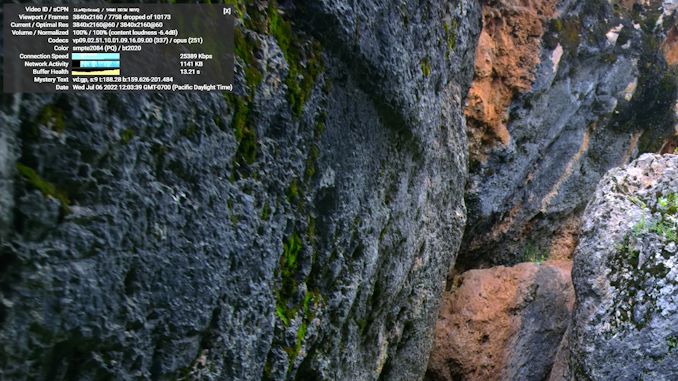
YouTube Streaming - ECS JSLM-MINI

YouTube Streaming - ZOTAC ZBOX CI331 nano
Intel's UHD Graphics for Gen 11 supports hardware decoding for VP9 Profile 2. Taking advantage of this feature, MS Edge automatically fetches the 4Kp60 VP9 Profile 2 encode from the YouTube servers. However, the playback was punctuated by frequent dropped frames on both systems as shown in the statistics segment of the above screenshots.
Various metrics of interest such as GPU usage and at-wall power consumption were recorded for the first four minutes of the playback of the above video. The numbers are graphed below.
The reason for the dropped frames is evident by the spikes in D3D Usage. However, as we shall see further down in this section, this problem doesn't manifest itself in local playback. The culprit here seems to be the MS Edge browser itself, rather than the hardware platform.
Hardware-Accelerated Encoding and Decoding
The transcoding benchmarks in the systems performance section presented results from evaluating the QuickSync encoder within Handbrake's framework. The iGPU in the systems support hardware encode for AVC, JPEG, HEVC (8b and 10b, 4:2:0 and 4:4:4), and VP9 (8b and 10b, 4:2:0 and 4:4:4). The capabilities of the decoder engine are brought out by DXVAChecker. They were the same for both the ECS JSLM-MINI and the ZOTAC ZBOX CI331 nano.
The decoder engine in Jasper Lake is not the latest and greatest that Intel has to offer. For example, HEVC and VP9 12b support, as well as AV1 support are absent. AV1 is quite new, and the others are required only for professional applications - market segments that are not targeted by Jasper Lake systems.
Local Media Playback
Evaluation of local media playback and video processing is done by playing back files encompassing a range of relevant codecs, containers, resolutions, and frame rates. A note of the efficiency is also made by tracking GPU usage and power consumption of the system at the wall. Users have their own preference for the playback software / decoder / renderer, and our aim is to have numbers representative of commonly encountered scenarios. Considering the target market for Jasper Lake systems, we played back the test streams using the following install-and-forget combinations:
- VLC 3.17.4
- Kodi 19.4
The fourteen test streams (each of 90s duration) were played back from the local disk with an interval of 30 seconds in-between. Various metrics including GPU usage and at-wall power consumption were recorded during the course of this playback. Based on the DXVAChecker report presented previously, the GPU should be able to play back all codecs with hardware acceleration (except for AV1).
All our playback tests were done with the desktop HDR setting turned on. It is possible for certain system configurations to automatically turn on/off the HDR capabilities prior to the playback of a HDR video, but, we didn't take advantage of that in our testing.
VLC and Kodi
VLC is the playback software of choice for the average PC user who doesn't need a ten-foot UI. Its install-and-play simplicity has made it extremely popular. Over the years, the software has gained the ability to take advantage of various hardware acceleration options. Kodi, on the other hand, has a ten-foot UI making it the perfect open-source software for dedicated HTPCs. Support for add-ons make it very extensible and capable of customization. We played back our test files using the default VLC and Kodi configurations, and recorded the following metrics.
| ECS JSLM-MINI Video Playback Efficiency - VLC and Kodi | |||
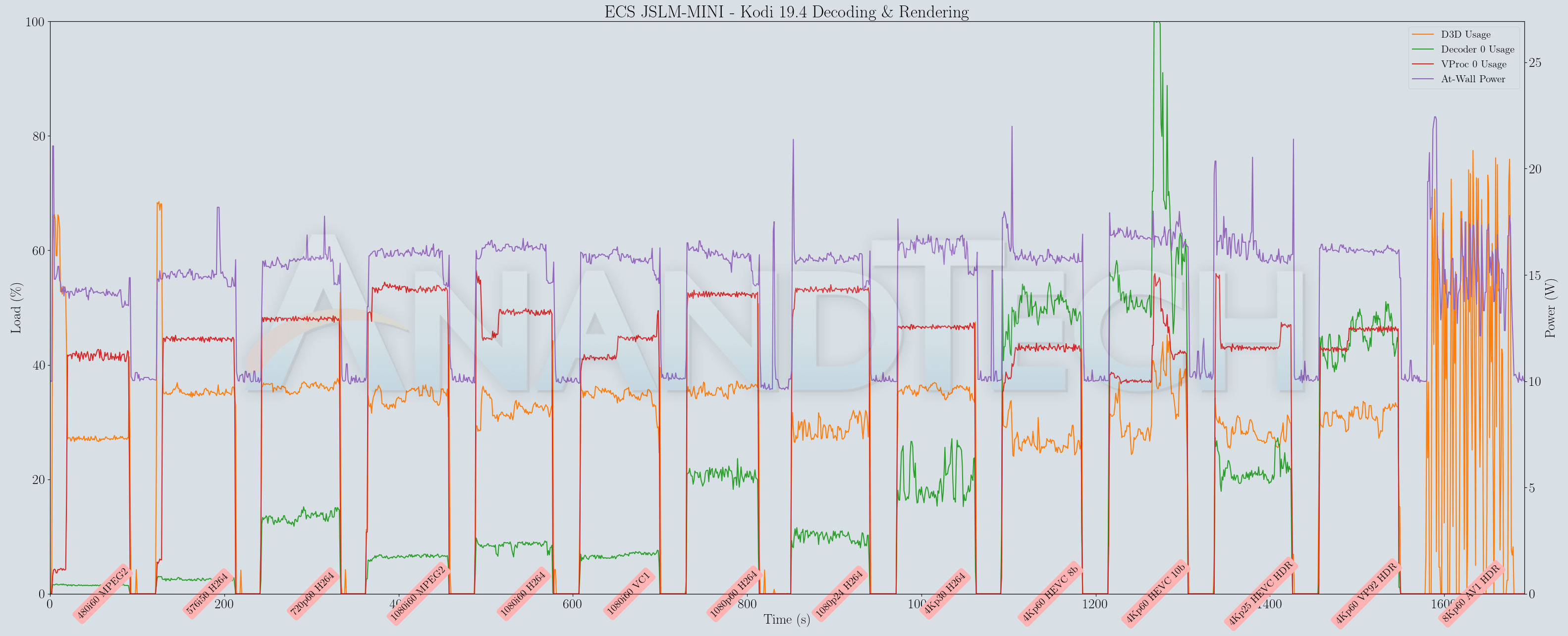
| ZOTAC ZBOX CI331 nano Video Playback Efficiency - VLC and Kodi | |||
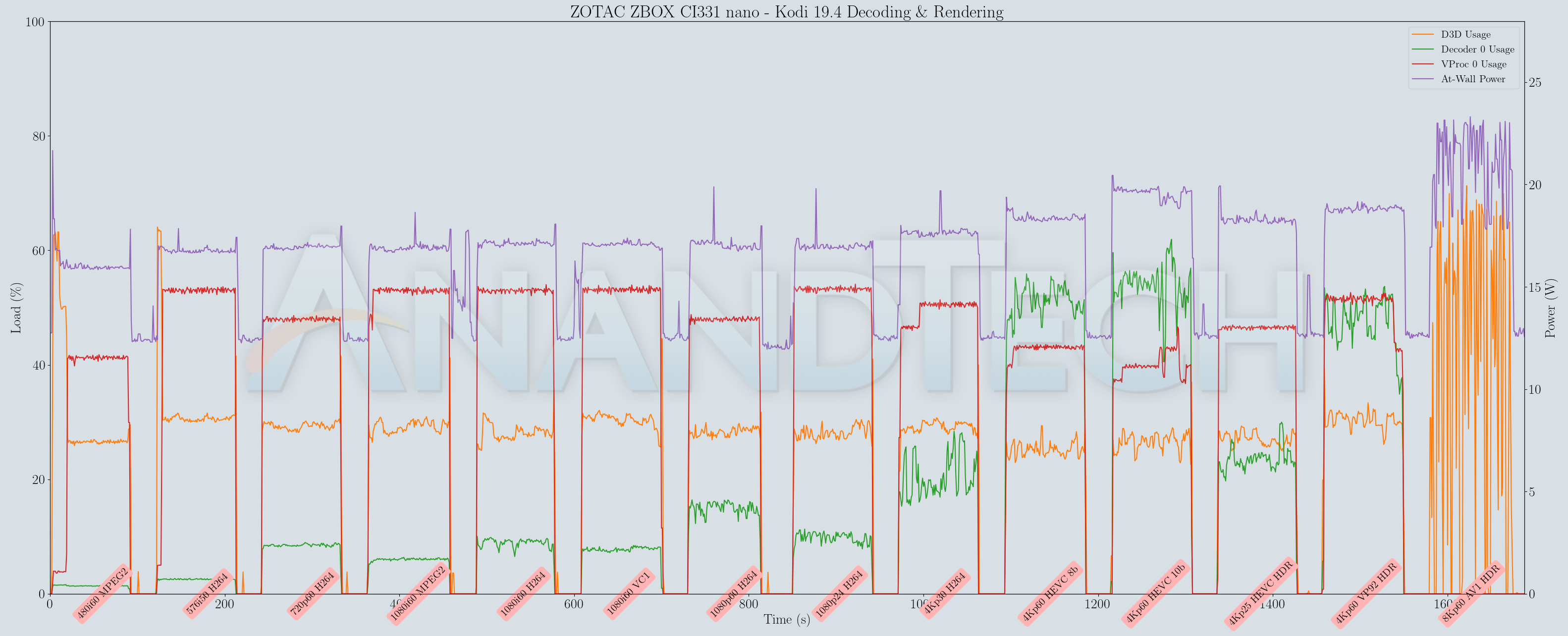
Both players in both systems had great trouble handling the 8Kp60 AV1 clip, due to the absence of hardware acceleration. In addition to consuming lots of power, the playback was just a sequence of frames updated every few seconds. Other than that, all other codecs played without missing a frame, with hardware acceleration activated for low-power playback.
Overall, both systems can be recommended for media playback from the local disk or over the local network. Using web browsers is a hit or miss depending on the codec, resolution, and browser. The presence of hardware acceleration also ensures that the systems are unlikely to get thermally limited during playback.


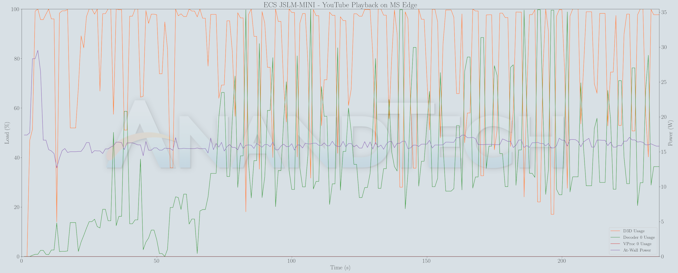
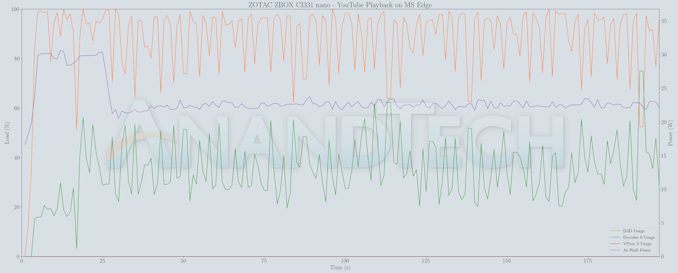
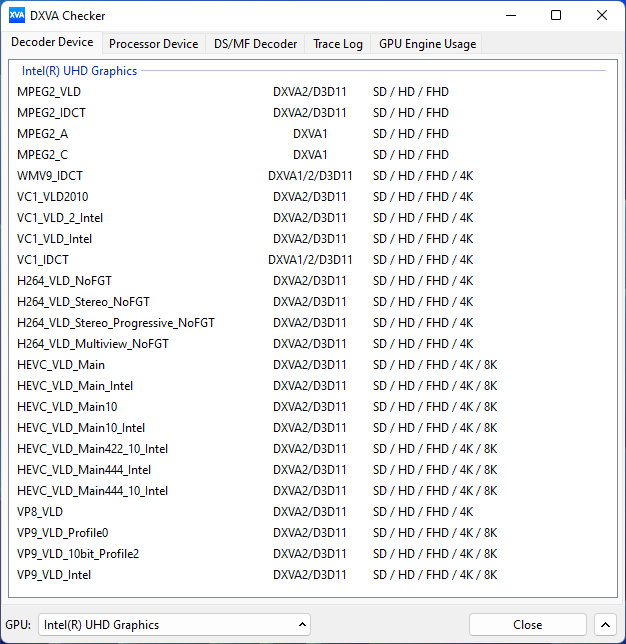








52 Comments
View All Comments
IntelUser2000 - Saturday, July 9, 2022 - link
I hope Alderlake-N gets a SoC variant of the 10nm process unlike the HP process for regular Alderlake.nandnandnand - Saturday, July 9, 2022 - link
It will be a shrink from 10nm to Intel 7 (formerly 10nm Enhanced SuperFin), and they should have different cell libraries available. I think they'd want the densest one. I'm sure whatever it becomes will be impressive compared to Jasper Lake.More importantly, I hope we see a lot of the 8-cores.
Thala - Tuesday, July 12, 2022 - link
Of course 8cx devices are more premium. But I was not referring to price, but to what it is technically possible within a 7W power envelope if you include devices, which does not contain Intel CPUs. It just shows that Intel CPUs are incredibly power inefficient independent of price. This includes Lakefield, Jasperlake or whatever CPU Intel designed for the sub 9W TDP market.IntelUser2000 - Saturday, July 9, 2022 - link
In MT yes. It's still quite a bit faster in ST.In ST if not under emulation both CPUs are roughly comparable.
mode_13h - Sunday, July 10, 2022 - link
Ganesh & Ryan:Above, we were talking about how Jasper Lake compares with Skylake and ARM A76 cores. It would be fantastic to have some hard data on this. Why not run SPEC bench on these mini PCs? It can't be any less weird than running it on a iPhone, right?
mode_13h - Sunday, July 10, 2022 - link
Oops, meant to say: "... can't be any weirder than running it on an iPhone"PeachNCream - Sunday, July 10, 2022 - link
A few typos here and there but a good review of hardware that might, for once, realistically land on someone's desk these days. Pity about the Liva's cooling situation. I wonder if chopping open a fair amount of the case top and replacing it with a fan grille or an epoxy-attached bit of non-metallic screen would be sufficient to mitigate the cooling problems while still retaining the bulk of the case itself. Too bad ECS didn't do potential buyers any justice with this design since the cost is otherwise okay.abufrejoval - Monday, July 11, 2022 - link
I can’t help but wonder if Anandtech feels a certain affinity to near-death technology these days…Jasper Lake is unfortunately dead. Whatever is being sold, was manufactured long ago and these systems are the typical leftover stock that Intel is pushing out the back door, as it reduces internal stockpiles to cover long-term warranties: nearly rock bottom, in other words.
I’ve been using Atoms since the J1900 on ASRock Mini-ITX boards, that were 100% passive, simply because they were 100% passive and thus zero noise: a somewhat novel experience ever since I switched from an Apple ][ [clone] to an IBM-AT [clone], which unfortunately started the trend on noisily moving parts.
And one constant has been, that Atoms have always supported way more RAM than advertised. It was 16GB or DDR3 on the DDR3 Atoms, 32GB for the J5005 devices I’ve been running as a oVirt(RHEV) cluster for a couple of years now.
A couple of weeks ago a Jasper Lake or Atlas Canyon NUC11 (NUC11ATKPE) popped up on my radar and since I’d been on a constant lookout for them, I immediately grabbed one, only to see that it might have been both, the first and last gasp of a phantom device: it’s been unavailable since, just as it was for it’s entire official life-time before.
And after putting it through its paces that is quite sad, because it really is a rather strappy and solid little machine, especially at a 2x Raspberry PI4 price point. It performs near identical to a Sandy Bridge i7-2600 and beats the Pi into a pulp with only a tiny helping of extra Watts: 10 vs 28nm does make a difference!
And again, just as you noticed, Jasper Lake will run just fine with far more RAM than Intel wants you to know. That is a constant with every NUC I’ve owned, i7 based NUC8/10/11 all run with 64GB just fine, even if only the Tiger Lake, from which I borrowed the dual 32GB DDR4-3200 SO-DIMMs for the Jasper Lake evaluation, did so officially.
But where my Tiger Lake will squeeze 40GB/s from that RAM, Jasper Lake will only get 25GB/s: quite a bit better than earlier Atoms, which rarely reached 10GB/s no matter what you gave them, dual-channel or not. The biggest benefit is for the iGPU, which probably won’t run Quake well enough, but does fairly well on a 4k desktop at 60Hz: the Chrome 3D Globe View render never ceases to amaze me in terms of what level of 3D interactivity is possible if the code isn’t Microsoft’s Flight Simulator. I haven't really checked, but I'd feel confident to say that it's iGPU performance is similar to the NUC10's Comet Lake UHD, which only has 24EUs but runs at roughly twice the speed. I can't go near the Tiger Lake, but none are meant for gaming.
The NUC has a fan. It’s practically noiseless and even a Prime95/FurMark combo won’t turn it into a howler, but it’s something that can clog and fail eventually. I’d have preferred another fully passive Mini-ITX from ASRock, but that was not to be. Rumor has it, OEMs quite simply refused to take Jasper Lake Atoms from Intel, even at typical contra-revenue bundle deals (effectively for free). Evidently they were stock poison, but I'd love to hear from anyone who knows more.
The Intel NUC is quite extraordinary in that it sports a front USB2 pin-grid connector covered by a rubber cap, that hints a very large signage customer OEM deal as the sole reason for its existence.
It certainly should have been given a 2.5Gbit/s Ethernet port (likely $1 extra cost), but then 1GB Ethernet simply should no longer be sold anywhere today. It also lacks SATA support, which is a bit of a bummer for someone like me, who still has quite a few SATA SSDs on hand, but a very logical choice otherwise.
But note that only two PCIe lanes are available for NVMe use, at least they are 3.0 this time, where all earlier Atoms topped out with 2.0 speeds on PCIe. The two rear USB3 ports are supposed to support 10Gbit/s, not quite Thunderbolt but please consider the TDP levels available.
The NUC chassis otherwise is extremely impressive for this price range, it feels extremely solid and built to last the 10 years perhaps expected from a digital signage device.
It seems a rather competent micro-server device and I'd thoroughly recommend it, if it was a live product. Too bad it’s dead, all you see is left-overs and there is no successor in sight.
nandnandnand - Tuesday, July 12, 2022 - link
Jasper Lake stock is being pushed out... at prices that you may actually want to buy it at. Actually, the older Gemini Lake Refresh is still being sold, in sub-$100 N4020 laptops for example.The RAM thing is weird. I recall some of the ARK pages lying about the amount of RAM supported on certain Atom models. Like saying 8 GB maximum instead of 32 GB.
The rumor mill has pointed to Alder Lake-N being the upcoming successor to Jasper Lake, with the headline change being a doubling to 8 cores. Presumably, dual-core would be gone for good and the cheapest models would become quad-cores.
There's also the embedded/enterprise-focused Elkhart Lake counterpart to Jasper Lake.
mode_13h - Wednesday, July 13, 2022 - link
BTW, Elkhart Lake supports in-band ECC, which means it doesn't limit the customer in their selection of RAM. However, it does come at a slight cost in performance and memory capacity.Too bad all the Elkhart Lake boards I see are rather pricey.
Getting back to ECC, you'd have to move to Atom C-series or P-series to get a SoC with these cores and full ECC support. See links in my post, above.